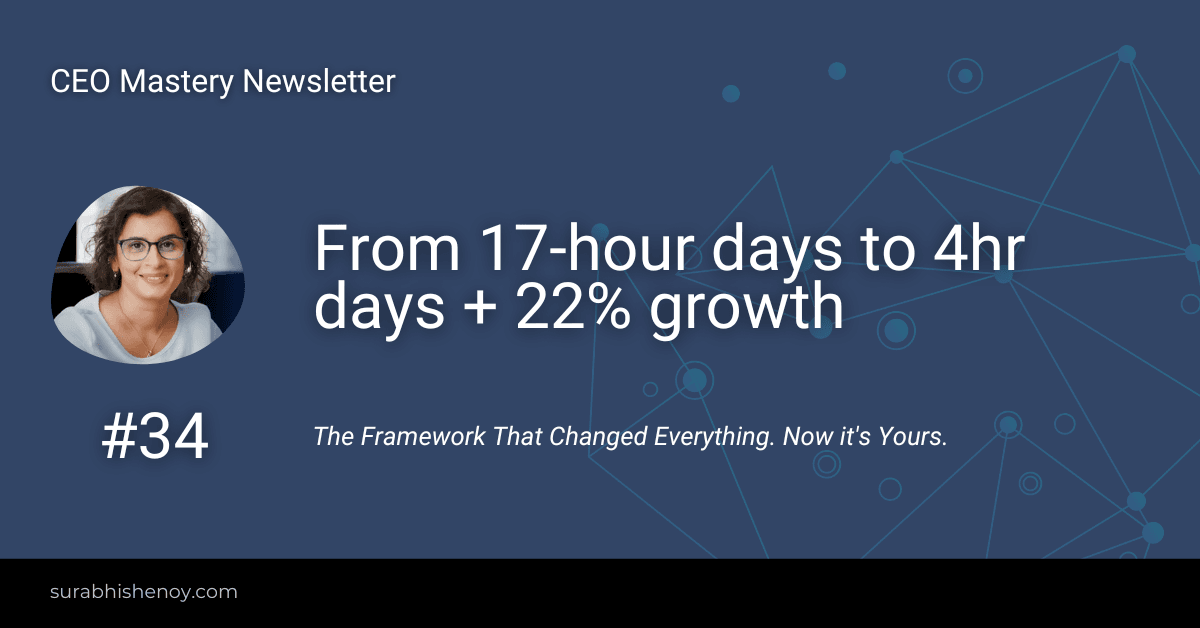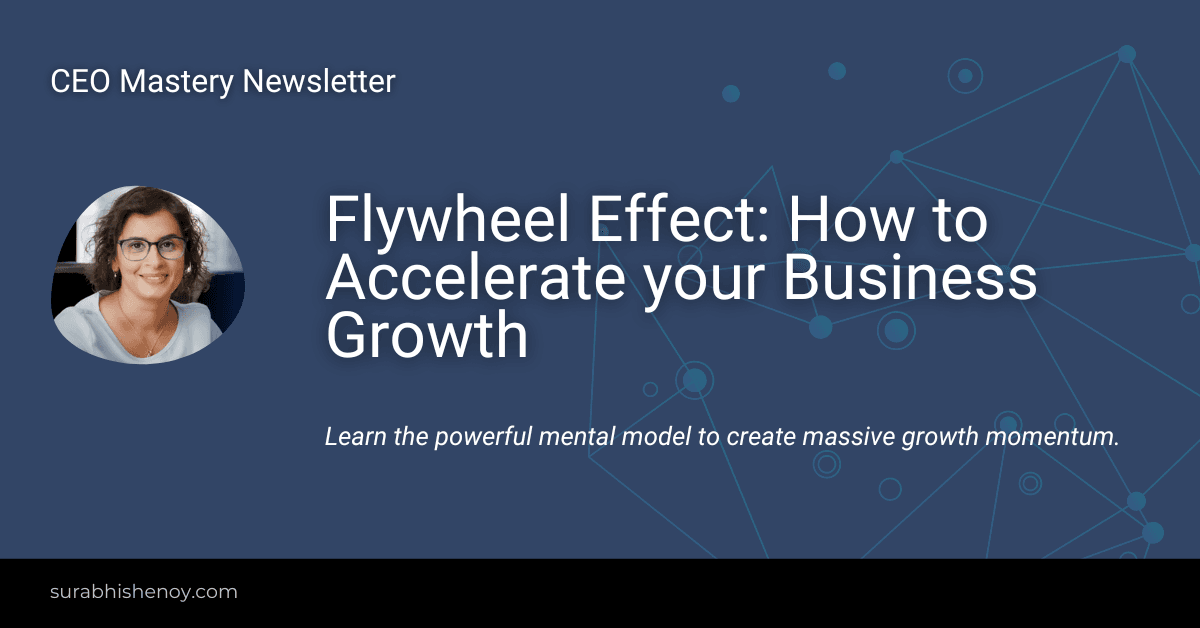“We just crossed 7 figures. So why am I less profitable and feel burned out?”, a founder asked me last month.
His revenue had doubled in 18 months. But net profit had dropped from 32% to 18%.
On paper, he was a winner. In reality, he was working harder, for much less.
Last week, I introduced you to the Lean CEO Model—showing how to scale revenue without adding headcount. But there’s a critical second piece to this puzzle:
Complexity is the hidden tax you pay for growth.
It’s why many founders feel their business is growing, but their freedom and profits are not.
The Reality: Growth Can Actually Shrink Your Profits
I chased revenue for the first 4 years.
I thought more work would justify all costs. I was wrong.
We had doubled our client base. Revenue was up 85%. At the same time:
- Team meetings multiplied
- Decision-making slowed to a crawl
- Projects ballooned from weeks to months
- Small issues that used to be solved quickly now required my involvement.
We were growing, but our profit per employee had plummeted.
I was paying a huge Growth Tax.
Why Complexity Sneaks In
The Growth Tax remains hidden because it’s hidden in our exciting growth metrics:
You celebrate adding more clients
(while ignoring that each new client fractures your focus)
You’re proud of expanding your offerings
(while overlooking the operational complexity this creates)
You feel validated by your growing team
(while missing the management burden this adds)
These “wins” feel like progress until your P&L reveals the truth: growth without simplicity ultimately shrinks margins. And the time to optimize it is WHILE you are growing, not afterwards.
Your Secret Weapon: Ruthless Simplicity
The best entrepreneurs don’t just manage complexity—they eliminate it.
Here’s my battle-tested 2-Step system to identify and cut complexity early:
STEP 1: The Profitability-Complexity Matrix

This simple 2×2 grid transformed how I evaluate every aspect of my business:
High Profit, Low Complexity
These are your crown jewels —the ideal clients, products or services that generate substantial profit without operational drag.
→ ACTION: Double down, expand, and replicate
High Profit, High Complexity
These make good money but consume disproportionate resources and attention.
→ ACTION: Simplify or raise prices to compensate for the complexity
Low Profit, Low Complexity
These may not be stars, but they’re efficient and don’t drain resources.
→ ACTION: Optimize or use as entry points for high-value opportunities
Low Profit, High Complexity
These are the silent killers of your business—projects that don’t pay well and consume excessive resources.
→ ACTION: Eliminate or transform immediately
STEP 2: The Complexity Reduction Filter
For each high-complexity element you identify:
- Eliminate: Can we remove this entirely without harming the core business? Always start here.
- Automate: If it must exist, can technology handle it without human involvement?
- Simplify: Can we reduce variables, options, or decision points?
- Delegate: If it must be done by humans, who besides you can own it entirely?
- Compensate: If it must be complex AND must involve you, are we charging enough to justify it?
Always start with Eliminate. Don’t carry weight you don’t need.
How To Cut Your Growth Tax This Week
Here’s your rapid-fire action plan:
Monday: List your current clients, products/services, and internal processes.
Tuesday: Plot each one on the Profitability-Complexity Matrix.
Wednesday: Identify your 3 worst ‘Low Profit – High Complexity’ projects.
Thursday: For each, determine whether to: eliminate, raise prices, or transform them.
Friday: Communicate decisions to the team and start executing the changes.
Remember: In business, what you subtract often matters more than what you add.
Why Bigger Isn’t Always Better
Want to grow and still breathe? Then fight complexity WHILE you scale.
The best businesses aren’t doing more. They’re doing less—with precision.
- They say no more often
- They drop what drains
- They double down on what works
As you implement the Lean CEO Model we explored last week, constantly audit for complexity. Scale what works, ruthlessly eliminate what doesn’t, and watch your profit margins expand even as your business grows.
This is how you build a business that’s not just bigger, but genuinely better.

🛠 Valuation Tip of the Week:
Simplicity doesn’t just improve profits. It also boosts your valuation.
Many founders chase high revenue multiples. But smart acquirers look deeper—especially at risk factors.
One big red flag? Client concentration.
If a single client brings in over 15% of your revenue, your business looks risky.
Healthy revenue spread = higher multiples.
Start diversifying now, even if an exit is years away.
📚 My Bookshelf:
Actionable insights from books that transformed me and how I built.
Book: Small Giants by Bo Burlingham
Most founders chase size. I did too. But this book made me pause.
It helped me see that growth without purpose is just noise.
I’ve used its lessons to help founders build companies that feel good to run, not just good to pitch.
One idea that stuck with me:
Define what “enough” looks like before the world defines it for you.
It changed how I set goals, say no, and guide clients through hard trade-offs.
In my tactical guide, I show you:
- How this changed my thinking
- What I do differently now
- What you can borrow for your own business
Thank you for being here.
To building a high-value, founder-free business,
Surabhi
P.S. What’s the most complex aspect of your business right now? Reply with a quick note—I read every response and might feature solutions in an upcoming edition.




